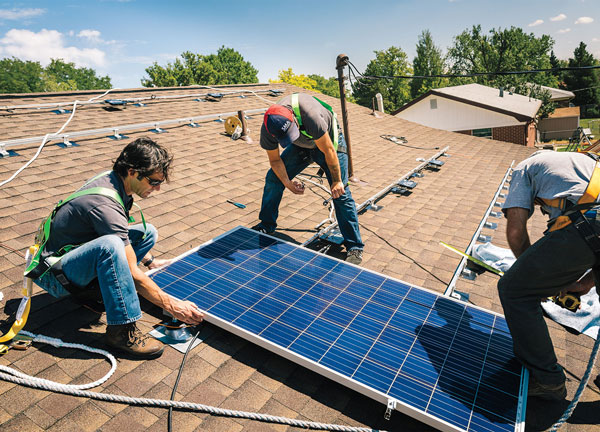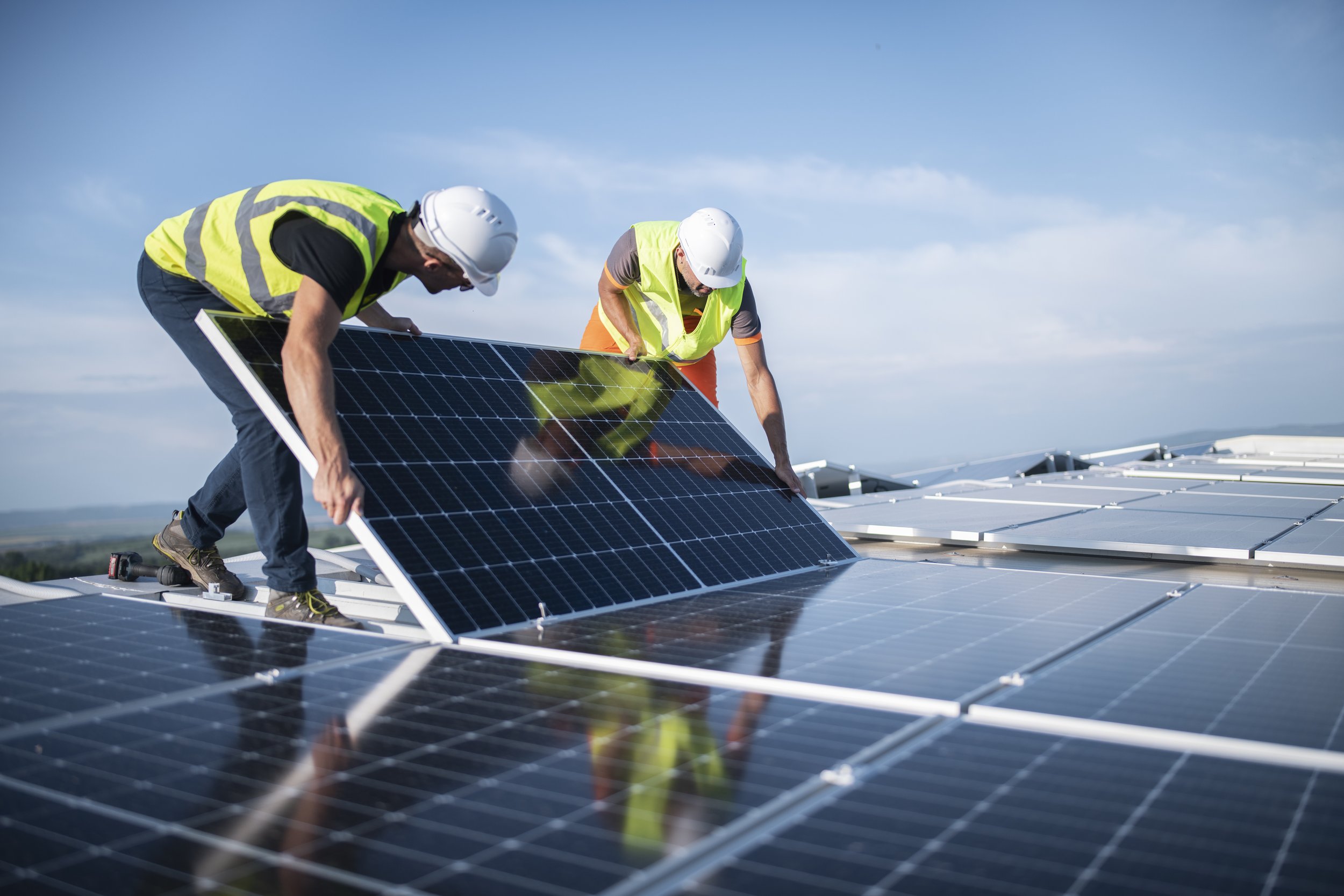Solar Energy Suppliers: Top-Quality Solar Modules Supply Efficient And Trustworthy Renewable Energy Solutions
Kinds Of Solar Panels: Translating the Options for the Finest Solar Panels
When it pertains to picking the best photovoltaic panels, comprehending the types readily available can seem like unraveling a riddle covered in sunlight. The market uses a handful of unique ranges, each with its own quirks and qualities. Have you ever questioned why some panels look streamlined and uniform while others seem irregular or speckled? The answer depends on their core technology and design.
1. Monocrystalline Solar Panels
Photo a single, flawless crystal of silicon-- pure, effective, and sophisticated. Monocrystalline panels are made from this single crystal. They are typically dark black, almost like a midnight sky, and they boast the highest performance rates. These panels prosper in tight areas, ejecting optimal power with very little footprint. If you've ever experienced the frustration of restricted roofing system area, then you know why these panels feel like a godsend.
- Performance: Typically 15-22%
- Lifespan: 25+ years
- Appearance: Uniform black color
- Expense: Greater upfront investment
2. Polycrystalline Solar Panels
Envision a mosaic artist's canvas-- a patchwork of silicon crystals merged together. Polycrystalline panels have a bluish shade and a speckled appearance, reflecting their multi-crystal structure. While they normally use somewhat less effectiveness than monocrystalline, they frequently come at a friendlier cost point. Think about them as the reliable workhorses of solar panels-- consistent and practical.
- Efficiency: Around 13-16%
- Life expectancy: About 25 years
- Appearance: Blue, speckled texture
- Cost: More cost effective upfront
3. Thin-Film Solar Panels
Have you ever seen those ultra-thin, flexible solar sheets that nearly feel like plastic? Thin-film photovoltaic panels are a different animal completely. They are lightweight and can be used to surfaces where standard panels would be impractical. Their efficiency tends to lag behind crystalline types, but their versatility is unequaled. Imagine wrapping your knapsack or car roofing system in solar batteries-- this is where thin-film shines.
- Effectiveness: Normally 10-12%
- Lifespan: 10-20 years
- Appearance: Uniform, frequently dark or clear
- Cost: Lower preliminary cost, however potentially higher long-lasting
Which Type Suits You?
Choosing the best photovoltaic panels isn't almost numbers; it's about way of life, roof area, and your vision for energy independence. Are you chasing after peak effectiveness in a compact area? Monocrystalline may be your champion. Required an affordable choice that doesn't stint dependability? Polycrystalline might be the response. Or are you ready to check out ingenious applications with thin-film?
| Type | Performance | Life-span | Expense | Ideal Usage |
|---|---|---|---|---|
| Monocrystalline | 15-22% | 25+ years | High | Limited space, high efficiency |
| Polycrystalline | 13-16% | ~ 25 years | Moderate | Budget-conscious, bigger roofing areas |
| Thin-Film | 10-12% | 10-20 years | Low | Flexible surfaces, non-traditional installations |
Ultimately, the pursuit of the finest solar panels is a journey, not a sprint. Review your requirements, space, and monetary goals. When sunlight meets smart choice, your panels can become more than just devices-- they become a storyteller of your dedication to sustainable energy.
Performance Ratings: The Heart Beat of Solar Panel Efficiency
Think of a photovoltaic panel as a thirsty traveler in the desert, non-stop going after the sun's energy. The efficiency score is the measure of how well it quenches its thirst-- how much sunlight it converts into functional electrical energy. Here, every decimal point counts. A panel with a 22% performance score transforms 22% of the sunlight it absorbs into power, while the rest dissipates as heat or light. But why does this matter a lot?
Efficiency rankings are not just numbers on a spec sheet; they determine the actual output of your solar financial investment. Think about a rooftop with limited space. Going with panels with greater efficiency indicates squeezing more power into those square feet, a vital factor for urban setups where every inch matters.
Deciphering Real-World Efficiency
Performance isn't fixed. It varies with temperature level, angle of sunlight, and shading. Solar panels typically lose effectiveness as they heat up-- typically about 0.3% to 0.5% per degree Celsius above 25 ° C. This implies a sunny summer season afternoon can paradoxically minimize your panel's yield.
Ever observed how a shadow from a tree branch can maim an entire solar range? That is because of string setup and bypass diodes working behind the scenes. A single shaded cell can drag down the output of the entire string, a subtlety often overlooked by newbies. This is why microinverters or power optimizers are game-changers-- they allow each panel to operate separately, alleviating shading results.
Professional Tips to Maximize Panel Performance
- Optimal Tilt and Orientation: Panels angled to record the sun's peak rays optimize everyday yield. Even a couple of degrees off can minimize output significantly.
- Temperature level Management: Setting up panels with sufficient air flow underneath assists dissipate heat, maintaining efficiency throughout hot spells.
- Regular Monitoring: Using performance tracking systems can highlight dips in efficiency triggered by dirt, micro-shading, or electrical concerns before they snowball.
Efficiency Metrics Beyond Performance

| Metric | What It Informs You | Why It Matters |
|---|---|---|
| Temperature Coefficient | Procedures efficiency loss per ° C boost | Shows panel resilience in hot environments |
| Destruction Rate | Yearly loss in power output over time | Predicts long-term energy production and ROI |
| Nominal Operating Cell Temperature Level (NOCT) | Expected temperature of the panel under standard conditions | Helps estimate real-world performance |
Choosing the very best solar panels implies understanding that performance scores inform only part of the story. Real-world conditions, installation quality, and part synergy all determine actual efficiency. Are you prepared to look beyond surface numbers and dive into the nuances that will truly power your home or service?
Setup Considerations
What lies below the surface area often determines the fate of your solar panel installation. The roofing structure bears a silent however enormous duty. Homes with aging or weak roofing systems might discover themselves wrestling with the weight of solar arrays. Have you ever seen a roof droop a little under heavy snow and questioned, "Could solar panels include to that?" That question matters. Ensuring your roofing can support the panels without jeopardizing integrity is vital.
Another puzzle piece: orientation and tilt. Photovoltaic panel grow when kissed by sunlight, but the angle at which they bask can transform energy output from modest to stunning. South-facing roofing systems typically win the sunlight lottery in the northern hemisphere, but what about that eccentric east-facing roof? In some cases, a creative racking system can coax more power from less-than-ideal angles. Angle modifications between 30 to 45 degrees often make the most of absorption, yet local environment subtleties can dictate small tweaks.
Website Assessment Tips
- Shade analysis: Trees, chimneys, and even nearby structures can cast shadows that stealthily sap your system's efficiency.
- Roof surface area: Determine functional space carefully-- blockages minimize the variety of panels you can install.
- Panel spacing: Ensure adequate space between panels to avoid getting too hot, which decreases efficiency.
Wiring logistics frequently slip under the radar but can make or break the installation's success. Long cable runs not just pump up expenses however present power losses. Use thicker gauge circuitry for longer distances to minimize voltage drop-- this is a subtle professional technique that can save substantial energy in time.
Mounting Approaches and Their Nuances
| Installing Type | Finest Usage Case | Pros | Cons |
|---|---|---|---|
| Flush Mount | Residential rooftops with strong structure | Low profile, cost-effective | Limited airflow, possible heat accumulation |
| Ballasted Mount | Flat roofs with no penetrations allowed | No roof penetration, quick set up | Much heavier system, might need structural support |
| Pole Mount | Ground setups | Adjustable tilt, much easier maintenance | Consumes ground space, potentially higher wind load |
Ever contemplated how extreme weather might check your solar setup? Wind uplift forces can pry improperly installed panels away like a gust peeling wallpaper. Utilizing appropriately ranked mounting hardware adjusted to your area's wind speed is not just a suggestion-- it's a required for durability. And what about snow load? Panels that shed snow swiftly avoid the silent drain on daily output.

Environmental Effect and Advantages of Best Solar Panels
Envision a world where roofs hum with the quiet work of solar energy, turning sunlight into power without a whisper of contamination. The very best solar panels do not simply slash your electrical energy expenses-- they wield Residential Solar Installation a profound influence on the environment. It's simple to neglect the subtle intricacies that determine simply how green your solar setup really is.
Not all solar panels are produced equal when it comes to the carbon footprint ingrained in their production. Manufacturing involves mining rare minerals and energy-intensive procedures. Here's the kicker: the most efficient panels stabilize that upfront ecological expense by generating clean energy for years, typically offsetting their preliminary carbon emissions within 1-3 years. This repayment duration is crucial-- ask yourself, for how long will your panel last, and just how much energy will it conserve?
Hidden Environmental Advantages
-
Reduction in Greenhouse Gases: Solar panels transform sunlight into electricity without launching CO.
2,.
curbing the ravaging greenhouse result.
- Water Preservation: Unlike nonrenewable fuel source plants that guzzle water for cooling, solar panels avoid this drain, preserving precious water resources.
- Land Usage Effectiveness: Setting up photovoltaic panels on roofs or broken down lands lessens interruption to communities and wildlife habitats.
One interesting fact typically missed: the waste management of solar panels at the end of their life cycle. Specialists recommend preparing for recycling paths early on to prevent environmental burdens from disposed of panels. The materials-- silicon, aluminum, glass-- are all recyclable, but the infrastructure is still capturing up in lots of areas.
Tips for Making The Most Of Environmental Benefits
- Select panels with a high energy conversion rate to guarantee quicker ecological repayment.
- Opt for solar cells made from less harmful materials, preventing panels with heavy metals like cadmium where possible.
- Coordinate installation with ideal panel alignment and tilt to harness optimum sunshine, making every photon count.
- Think about incorporating energy storage systems to ravel solar intermittency, enhancing overall system sustainability.
Ever question why some solar ranges shine brighter than others? It's not practically look. Dirt, shading, and even micro-cracks can damage performance drastically. From an environmental lens, effectiveness indicates fewer panels needed, which equates to less material consumption and lower embodied energy.
Solar power is a peaceful transformation, however its full ecological possible unfolds just when you believe beyond just the preliminary savings. It's about the causal sequence of every watt produced, every contaminant prevented, and every drop of water saved. What if your next solar choice could be a vote for a cleaner world?